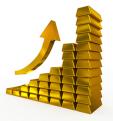Frank Shostak
 Frank Shostak is an adjunct scholar of the Mises Institute and a frequent contributor to Mises.org. His consulting firm, Applied Austrian School Economics, provides in-depth assessments and reports of financial markets and global economies.
Frank Shostak is an adjunct scholar of the Mises Institute and a frequent contributor to Mises.org. His consulting firm, Applied Austrian School Economics, provides in-depth assessments and reports of financial markets and global economies.
Frank Shostak Articles
Econometric model building attempts to produce a laboratory with controlled variables. By means of mathematical and statistical methods, an economist establishes functional relationships between various economic variables.
The New York Federal Reserve said on Tuesday, September 5, 2023, that the estimate for the neutral rate for Q2 has eased to 0.57 percent from 0.68 percent in Q1. Analysts typically translate that rate into a real-world setting by adding...
According to popular thinking, the definition of money is flexible. Sometimes the money supply could be M1 (currency and demand deposits); at other times it could be M2 (all of M1, plus savings deposits, time deposits, and money market...
Various assumptions employed by mainstream economists are detached from reality. For instance, in order to explain the economic crisis in Japan in the 1990s, Nobel laureate in economics Paul Krugman employed a model that assumes that...
The US consumer sentiment index, compiled by the University of Michigan, fell to 69.5 in August from 71.6 in July. A weakening consumer sentiment index is seen as indicating a potential downturn in consumer spending and the economy in...
On August 16, 2023, the Federal Reserve expressed concern about the pace of inflation, saying future rate hikes could be necessary if conditions do not change. Currently, the federal funds target rate is between 5.25 and 5.50 percent, the...
Many economic commentators view debt as a major risk factor as far as economic health is concerned. This way of thinking has its origins in the writings of Irving Fisher. According to Fisher, the high level of debt runs the risk of setting...
Keynesian economists believe that recessions occur because of a weakening in aggregate demand, so boosting demand will end the downturn. Whenever an economy shows signs of weakness, most experts believe that increasing aggregate demand...
It is widely held that a growing economy requires a growing money stock because economic growth increases demand for money. Many economists also believe that failing to accommodate the increase in the demand for money leads to a decline in...
The U.S. personal savings rate eased in September to 3.1 percent from 3.4 percent in August. In September 2021 the savings rate stood at 7.9 percent. By popular thinking, a decline in the savings rate during an economic slowdown is...










